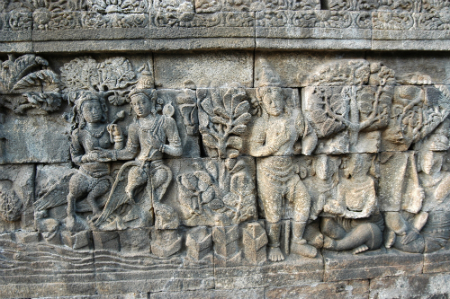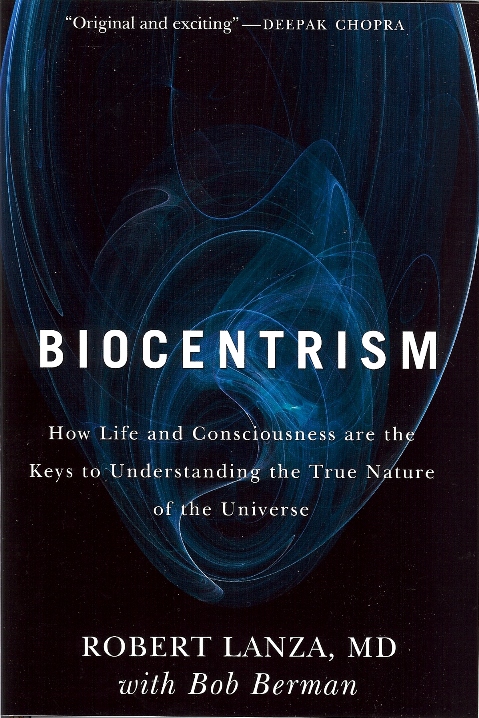Book Consistent With the Most Ancient Traditions of the World
The last authorized disciple of Taizan Maezumi Roshi (the foremost Zen master of the 20th century) describes this book as mirroring his experiences in the practice of zazen as closely as anything he has encountered in a modern writer.

Where Am I? What Time Is It?
by Michael Isshin Spiller
A review of Biocentrism: How Life and Consciousness are the Keys to Understanding the True Nature of the Universe, by Robert Lanza, MD, with Bob Berman
There are periods when I read from this book every morning, in the same way that I read Song dynasty Ch’an masters like Ta-Hui or Yuan-wu. I read for inspiration and for a much-needed infusion of wonder, in an effort to counterbalance the jaundiced view of life I have just reinforced by scanning the New York Times.
Probably the most remarkable thing for me about this book is that it sounds so much like Nyogen Roshi, the Zen teacher I have been listening to for some 13 years now. This teacher, who has read the book and who has no background in science, has said that the author’s words mirror his own experiences in the practice of zazen as closely as anything he has encountered in a modern writer.
I should note that my teacher, with his 40-plus years of deep commitment to spiritual practice, would no doubt produce a review of the book that was fundamentally different from mine: I am pretty much your typical 21st century materialist playing around in the shallow end of the pool.
Be that as it may, if I had to reduce this book to one statement it would be: My perceptions are reality. They are the only reality I can ever know because the universe is literally in my head; it was born when I was born, it will die when I die. From the common point of view, this is outrageously narcissistic. From the standpoint of neuroanatomy, however, it is indisputable: Everything we perceive is processed within different parts of the brain. In the author’s words, “‘The animal observer creates reality and not the other way around.”
This premise is fleshed out in a number of fascinating ways in the book’s almost 200 pages. The main author, Robert Lanza, works in the field of stem-cell research, but he takes on the same basic issues that have preoccupied the great theoretical physicists of our time. He approaches the subject from a fundamentally different angle – that of consciousness – and does it in a way that is accessible and relevant to people untrained in science.
The theory that he calls Biocentrism has several principles:
- What we perceive as reality is a process that involves our consciousness.
- Our external and internal perceptions are unavoidably connected; they are different sides of the same coin and cannot be separated.
- The behavior of all particles and objects, subatomic and otherwise, is linked to the presence of an observer. Without the conscious observer, everything exists in a state of probability. Therefore, a universe that preceded consciousness – including one produced by a “Big Bang” — only existed in a state of probability.
- Time is not real outside of animal-sense perception. It is how we perceive changes in the universe.
- The universe is fine-tuned for life. Life creates the universe, not the other way around.
Judging from the results of a Google search for “Biocentrism Robert Lanza,” this last statement is the one he has received the most criticism for, and one that I confess makes me a little queasy. It sounds a bit chauvinistic, a little too much like the Old Testament notion that God created us in His image.
But that’s a small matter. The proverbial elephant in the room remains: All science takes place in the minds of human beings, both those who can do it and those who can only read about it.
Some of my favorite parts of the book include:
- The mind-teasing chapter “Where Is the Universe?” in which Lanza presents the idea that what we are looking at, right now, “out there,” is mind, or consciousness. He says — and I am forced to agree with him — that this cannot be grasped with the logic of language.
- In this same chapter Lanza attacks our cherished notion of self-determined control. Experiments with cognitive function have shown that the brain sometimes makes a decision to act a full ten seconds before action is taken. His implication: We can relax and enjoy ourselves, because we will do whatever we need to do anyway.
- “When Tomorrow Comes Before Yesterday,” in which Lanza describes some of the classic experiments that have proven the validity of quantum physics. I find the quotation included from Nobel laureate Richard Feynman especially comforting: “I think it is safe to say that no one understands quantum mechanics. Do not keep saying to yourself, if you can possibly avoid it, ‘But how can it be like that?’ because you will go ‘down the drain’ into a blind alley from which nobody has yet escaped.”
- “Space Out,” in which Lanza challenges our solid, concrete notions of the way we orient ourselves in our relationship to everything around us.
- “No Time to Lose” does the same thing with time. I first read this chapter during a week-long sesshin, and it struck me that zazen temporarily puts an end to the sensation of time. The more committed to your sitting you are, the more it does that. And it seems you can carry that feeling of no-time out into your life with you.
I find it endlessly startling and refreshing to remind myself that the person sitting next to me – while they might agree with me about the color of the carpet in front of us or the sound of that bird outside the window – is watching a movie that is uniquely different from mine, and one that I can never rent from Netflix.
This insight, no matter how conceptual or superficial, can also serve as the starting point for personal responsibility. If I can be aware that my universe is the only one there is, then maybe I can treat it with more care. And that could potentially make your universe a little better.
It is astounding—not to mention humbling—that I appear to be doomed to forget this fact almost every moment of my waking life. Fortunately, I do have the ability to remind myself, and to the degree that I am able to do that (which increases with my own sense of urgency to do so), I get to experience life in a more open, sane and engaging way. In-between these tiny moments of awareness, I have people like Ta-Hui, Yuan-Wu and Dr. Robert Lanza to remind me.
Robert Lanza has published extensively in leading scientific journals. His books “Biocentrism” and “Beyond Biocentrism” lay out the scientific argument for his theory of everything.






